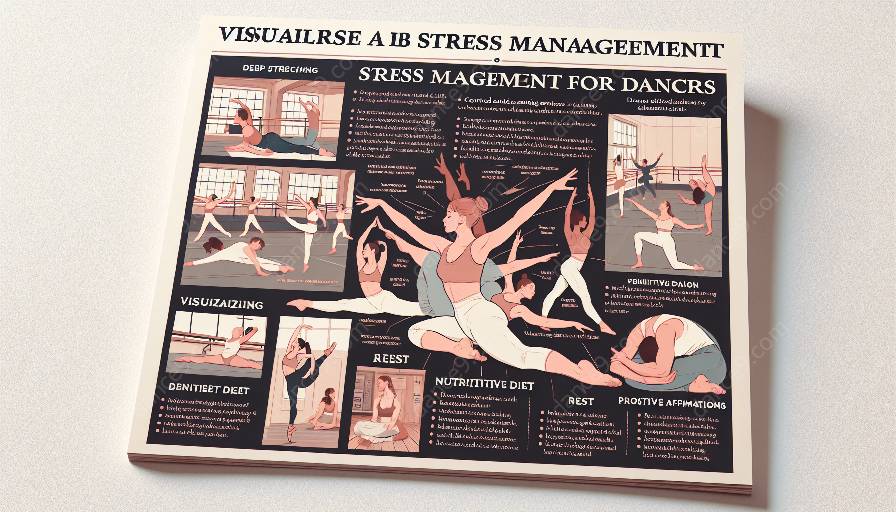With the physical and mental demands of dance, it is crucial for dancers to prioritize stress management techniques to reduce the risk of injury and maintain their overall well-being. By incorporating effective stress management practices, dancers can enhance their physical and mental health, leading to a safer and more enjoyable experience in the dance world.
Understanding the Impact of Stress on Dancers
Dancers often face various stressors, including performance pressure, rigorous training schedules, and the constant pursuit of perfection. This chronic stress can take a toll on their bodies and minds, making them more susceptible to injuries and compromising their overall health.
Physical and Mental Health in Dance
Before delving into stress management techniques, it's crucial to recognize the intricate connection between physical and mental health in dance. Both aspects are closely intertwined, and neglecting one can have detrimental effects on the other. A holistic approach to health and well-being is essential for dancers to thrive and excel in their craft.
Stress Management Techniques for Dancers
There are several effective stress management practices that dancers can incorporate into their routine to minimize injury risks and promote overall wellness:
- Mindfulness and Meditation: Encouraging dancers to practice mindfulness and meditation can help alleviate stress, enhance focus, and improve emotional regulation, ultimately reducing the likelihood of injuries.
- Yoga and Flexibility Training: Integrating yoga and flexibility exercises not only helps in physical conditioning but also serves as a form of stress relief, promoting relaxation and reducing muscle tension.
- Proper Nutrition and Hydration: Emphasizing the importance of a well-balanced diet and adequate hydration is vital for dancers to maintain their energy levels, support muscle recovery, and cope with stress effectively.
- Rest and Recovery: Educating dancers on the significance of rest and recovery periods is crucial in preventing burnout and overuse injuries. Adequate sleep and downtime are essential for overall well-being.
- Time Management and Goal Setting: Teaching effective time management skills and encouraging goal setting can help reduce performance-related stress and foster a sense of accomplishment and control.
- Stress-Relief Activities: Promoting extracurricular stress-relief activities such as art, music, or other hobbies can provide dancers with an outlet to unwind and recharge.
Benefits of Incorporating Stress Management Practices
By integrating these stress management techniques into their routines, dancers can experience a myriad of benefits, including:
- Reduced risk of injury
- Enhanced physical performance
- Improved mental well-being
- Increased resilience to stress
- Long-term sustainability in dance career
Conclusion
As dancers navigate the demanding and competitive dance industry, prioritizing stress management practices is paramount for minimizing injury risks and promoting physical and mental health. By embracing a holistic approach to well-being and implementing effective stress management techniques, dancers can elevate their overall performance and enjoyment while safeguarding their long-term health in the world of dance.


































